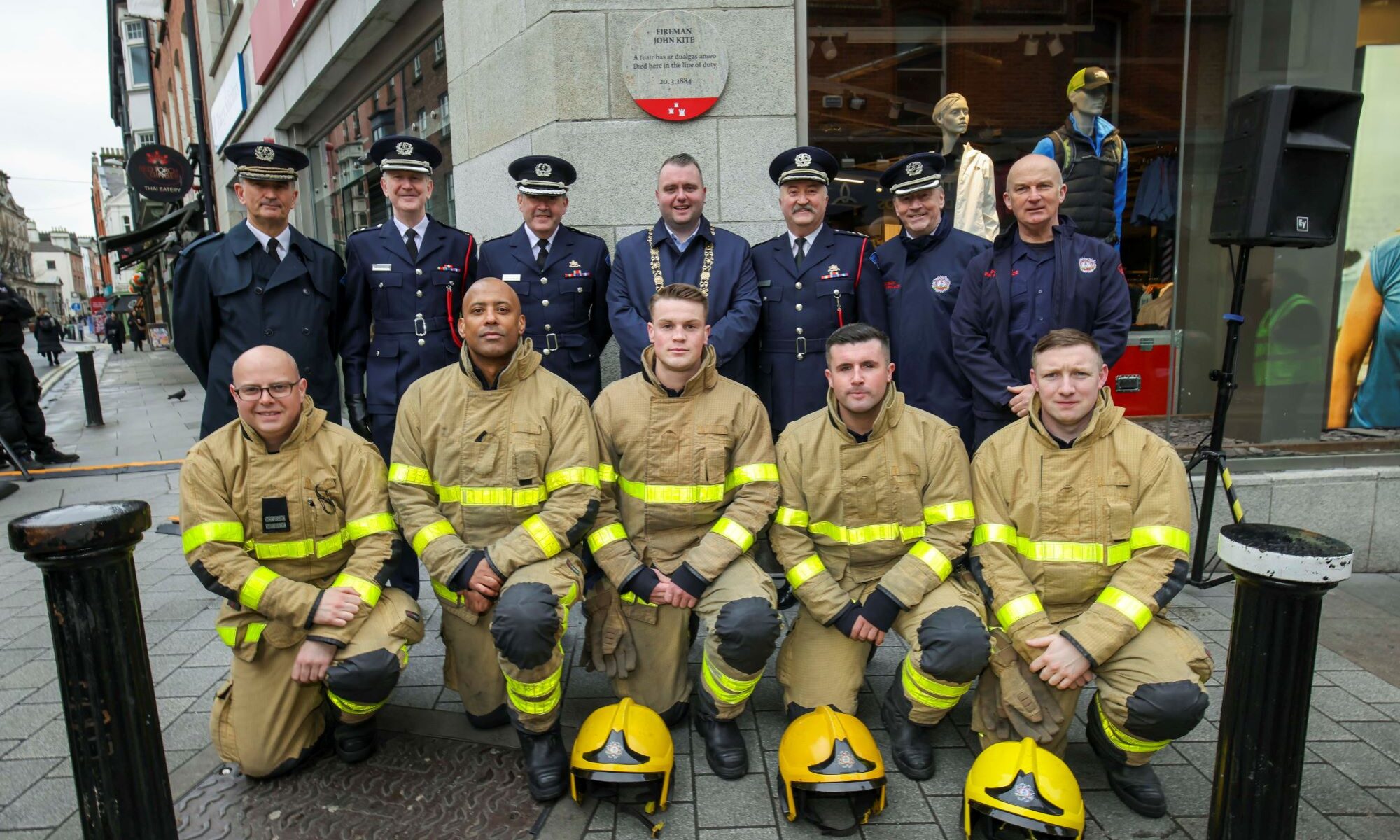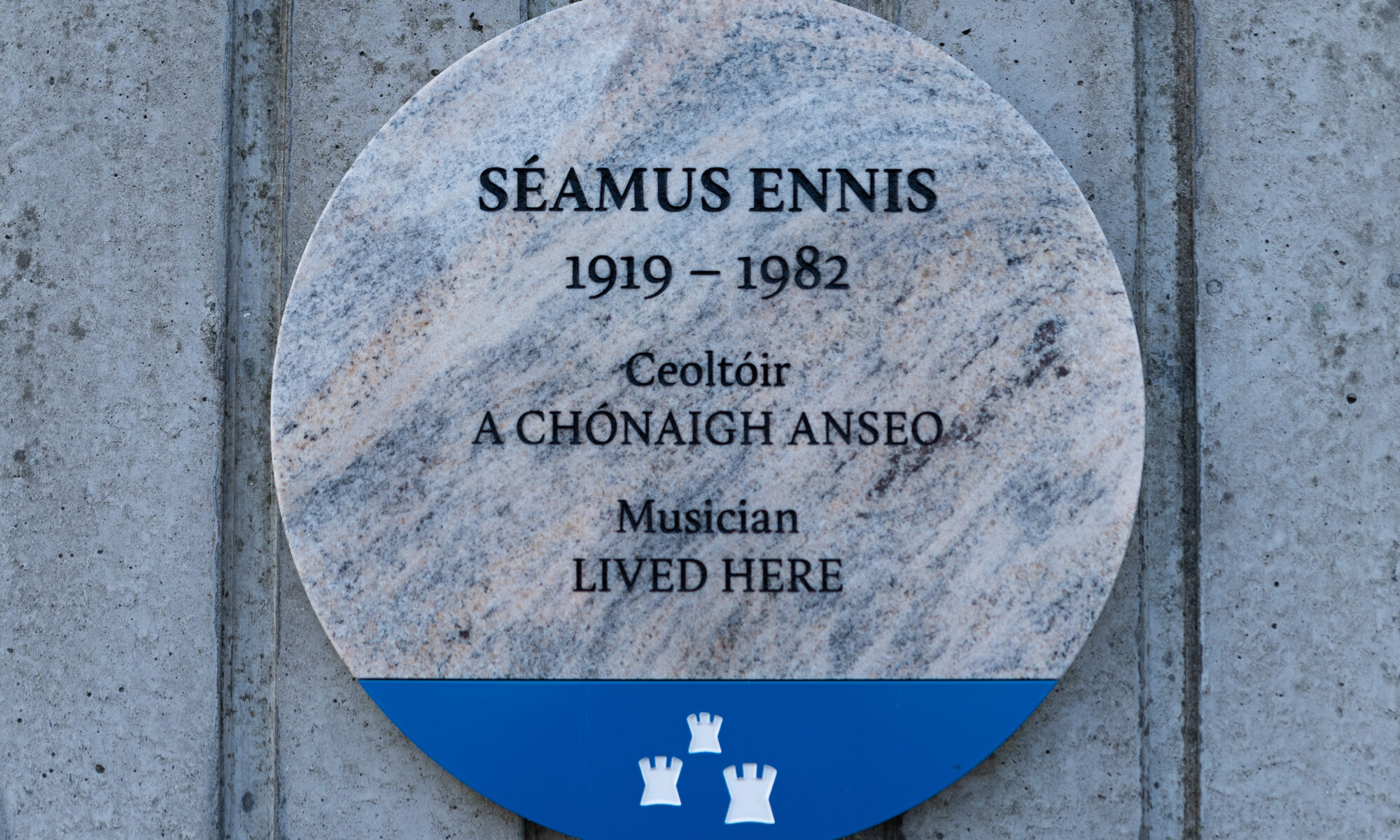On the afternoon of Friday, 3rd May 2019, an official Dublin City Council commemorative plaque unveiling took place at the site of Séamus Ennis’s boyhood home in Finglas, which was demolished during the 1960s.
This event occurred two days before the centenary of the birth of the renowned musician, singer, folklore collector and broadcaster who left behind, to quote from one 1982 obituary notice, “a priceless heritage of Irish tradition to the nation”.
The plaque was unveiled outside Burgess Galvin & Co. Ltd. on the Jamestown Road by Councillor Paul McAuliffe, representing the Lord Mayor of Dublin, with Ennis’s children Catherine and Christopher travelling from England for the occasion.
A bronze plaque commemorating Ennis at the same site had previously been unveiled by John Gormley, Lord Mayor of Dublin, on Tuesday, 1st November 1994, during the inaugural Séamus Ennis Festival (Féile Shéamuis Ennis), a week-long Finglas celebration that included the renaming of a local road in Ennis’s honour. This earlier commemorative plaque was designed by Finglas sculptor Leo Higgins and stonemason Bobby Blount.
If you would like to learn more about Séamus Ennis, there is an essay on his life in the book History on your Doorstep, Volume 2. Six more stories of Dublin history (Dublin City Council, 2019), available at all branch libraries. Photo by Paddy Cahill. You can also watch the presentation by Dr James Curry, Dublin City Council historian in residence, which is part of a Plaques of Dublin online lecture series.


